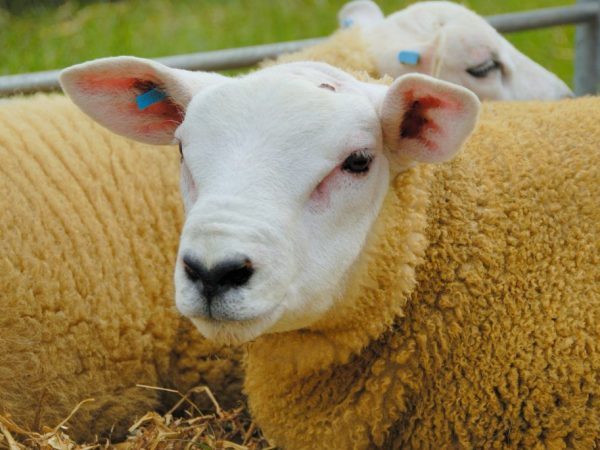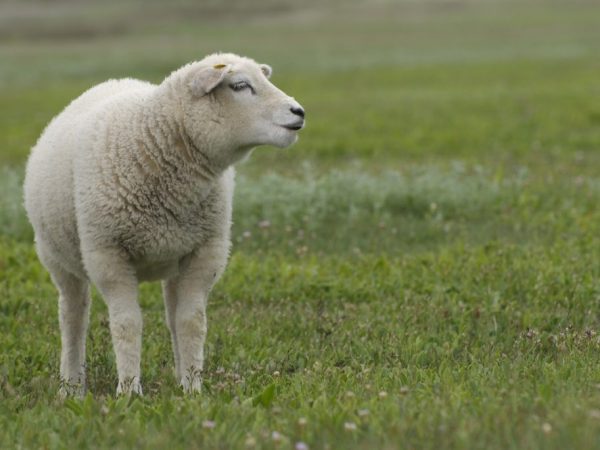Description of Texel sheep
The Texel sheep breed is one of the most productive meat-wool breeds, combining unique features: wool, meat, endurance, unpretentiousness and early maturity.

Characteristics of Texel sheep
The origin of the Texel breed
The Texel is an ancient breed, the official description states that it dates back to the times of the Roman Empire. Throughout its history, the exterior of the breed has undergone significant changes. The history of the breed begins on the island south of the Netherlands, which gave it this name. In an effort to improve the quality of meat, Dutch breeders crossed local breeds with English. Soon the breed came to France, and from there to Britain, where the process of its improvement continued. Attention was paid to meat qualities.
As lean meat is popular in Europe, Texel sheep, which have a layer of fat and soft wool, quickly became more widespread than other beef breeds. In the nineteenth century. the breed has become the most popular in Europe and is not inferior to the championship.
Description and features of the breed
Texel is a special breed, it belongs to meat and wool, has a memorable exterior and impressive size. The most specific characteristics and differences of the breed are the absence of horns in rams and hair between the ears. Animals have superbly developed muscles, their meat is dietary.
The head is usually white, occasionally the ears and eyelids are black spots, the nose is black. The forehead is wide, ears set wide apart. Texels have a thin, short tail. The body is proportional, of medium size, rectangular, strong, powerful, with a perfectly developed muscular system (moreover, the muscle mass does not tend to decrease with age). The back is straight, the lumbar region is thinner, the neck is muscular, the hips are well developed. Legs are slender and muscular, most often they are covered with short white hair (hair on the limbs may be absent, which is not a defect).

Features of the Texel breed
In rams, the height is very high, it is 85-87 cm at the withers, in sheep - up to 75 cm. The ram has a maximum weight of up to 160 kg, the weight of sheep is much more modest - up to 70 kg. The weight of newborn lambs is 5-7 kg.
There are the following colors of the breed:
- white;
- golden;
- light brown;
- white-bluish (this color is becoming more and more popular and desirable).
Sheep wool is characterized by high density, density and softness; the fibers are twisted, semi-thin, of medium length; their thickness is 30-34 microns.
Texel is a special breed, its exterior is rather heterogeneous. The main difference between the species is the growth of the animals.
There are 3 subspecies of Texels:
- Dutch. Has the greatest muscle mass and is more powerfully built with short limbs.
- English. It differs from the Dutch in higher stature, long legs with a less powerful physique.
- French.The average type, the closest to the original of the breed, a distinctive feature of which is the greatest early maturity.
This species is characterized by early maturation (7-8 months before the first mating) and high fertility rates.
Breed productivity
The Texel sheep breed is one of the leaders in the productivity of meat and wool breeds. A ram of the Texel breed gives up to 7 kg, a Texel female - 5.5 kg. The yield of pure wool is 70%. Summer is the most suitable time for shearing sheep. Animals are cut clean so that no hairs remain on the body.
Wool is used most often for the production of natural yarns. The meat is tender, has excellent taste, without a specific smell, cooks quickly, almost free of fat, which was the purpose of Texel's selection. Productivity is 60% per individual.
Advantages and disadvantages of the breed
The main advantages of Texel:
- high rates of yield and quality of wool of various colors;
- significant yield of excellent quality meat;
- fertility (180 lambs per 100 females);
- strong immunity;
- developed muscles and physical strength;
- endurance and adaptability to living conditions and grazing;
- independence, calm and flexible character.
Disadvantages:
- low litter rates: once a year;
- childbirth is difficult;
- lambs after 3 months slowly gain weight;
- the purity of the breed is a rarity.
Sheep breeding Texel
The breeding of Texel sheep raises doubts among farmers about the feasibility of acquiring, because according to the main characteristics, it shows a lag. It should be emphasized that the use of artificial stimulation does not give the expected effect.
The female matures at 7-8 months. The average productivity is 1.7-1.8 lambs per sheep, 1-5 lambs are born at a time, but most often twins. Usually mating occurs between September and January.
Childbirth is difficult and lengthy almost always due to physiological characteristics (lambs are born large, with a large head, which creates difficulties when passing through the birth canal). A veterinarian must be present at childbirth. The female's milk is quite fat and nutritious, but it is enough for 2 lambs, and in the case of the birth of more cubs, they are transferred to another female. Lambs are born adapted and can go out to graze on the 2nd day of life. In the first 3 months, lambs are rapidly gaining weight (400-600 g per day), then growth slows down to 200-300 g.
Features of the breed
Texel sheep are not demanding in comparison with other breeds and do not need special conditions of keeping. It is only necessary to create the same conditions as for other types of livestock, first of all, a warm and clean ventilated sheepfold is important. First of all, attention should be paid to the fact that the sheepfold should not be damp during the cold season, and fresh water should be available constantly, this is the guarantee of animal health.
Representatives of the Texel sheep breed differ from others in the absence of herd instinct, independence and a desire for solitude. However, these individualists get along with other pets and even tend to be nailed to cows and horses for grazing. Possessing a muscular body, the ram is able to defend itself, and therefore rarely becomes a victim of an attack by wolves. Thanks to their calm and balanced nature, these animals do not scatter from the pasture, do not cause much trouble to farmers and do not require constant supervision. Developed muscles allow them to get out of inappropriate places without assistance.
This northern beef breed has strong immunity and rarely gets sick. Almost any conditions are suitable for grazing: mountainous terrain, plains, wetlands. Animals are characterized by high frost resistance, they tolerate strong winds and precipitation well. They also easily adapt to changing conditions of detention.
Any food is suitable.In addition to hay and straw, they provide combined feed, as well as mineral supplements.
Texel in Russia
In our country, Texel sheep are not widespread, despite the prospects and high productivity. The existing Texel sheep are not purebred, and their price is quite high. Pavlov M.B. notes: "Unfortunately, in fact, the CIS does not have a gene pool of specialized meat breeds that fully meet modern requirements, and therefore its creation is an urgent task of domestic sheep breeding." But scientists are convinced that, taking into account the enduring popularity of these sheep in Europe and America, it can be assumed that in the near future Texel will not only be appreciated at its true worth, but soon its purebred representatives will appear on farms.


